If you’re on the path to building a startup, you know what it means to fail. In this week’s Workshop Wednesday, Tracy Young, CEO and Co-Founder of TigerEye and PlanGrid, says that “everything is going to fail.”
Young took PlanGrid from nothing to $100M ARR before passing the baton and shares the biggest lessons learned, the biggest failures, and how to navigate them.
Organizational Structure and Communication Failure
Everyone knows that the biggest issues often arise within any kind of relationship because of a communication breakdown. It’s no different in the startup world.
Early on at PlanGrid, they tried to be creative about organizational structure. They didn’t give anyone titles and bragged about running the company like StarTrek.
This was fine and dandy while the company only had 30 people, but after tripling in one year to 90 and then doubling to 180, they realized how important those titles were.
People care about titles and career paths for obvious reasons, so if you care about your team, these need to matter to you too.
As the company grew, everything started to fall apart. They were a high-functioning, fast-moving machine, but suddenly everything got stuck.
And organizational structure was a major factor — hierarchy, to be exact. At 30 people, everyone could report to the founder. Communication was pretty easy as long as the founders were in lockstep.
But when you’re at 150 people, everything is chaos without some communication architecture in place. The front line was now 2, 3, and 4 levels away from the CEO and founder, which means everyone needed to be in lockstep. And they weren’t.
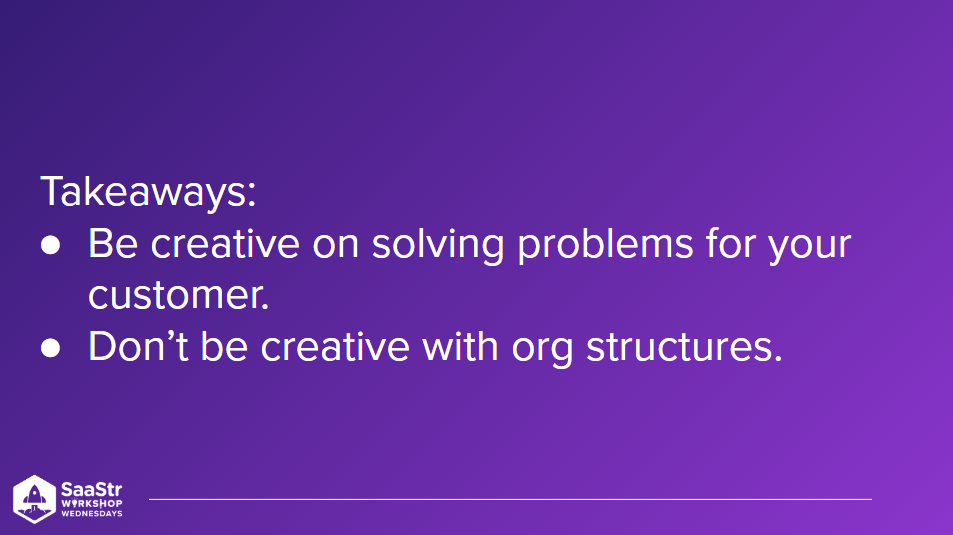
The Takeaways:
- Be creative about solving problems for your customer.
- Don’t be creative with organizational structures.
Internal Conflict Will Come Up
People experience conflict. There’s a natural tension in startup environments. Marketing is focused on generating leads while salespeople are closing them. Product designers are spec-ing out what engineering is supposed to build.
So how do you navigate this as a founder?
When you have a non-cohesive team, they obviously won’t work well together. Even if you work well together, tensions can get magnified when things aren’t going according to plan or expectation.
A lot of finger-pointing can happen if you don’t have clear communication expectations within the company, which can be very damaging for a startup or any team.
So create a set of core values, and then help each person within the company own those values.
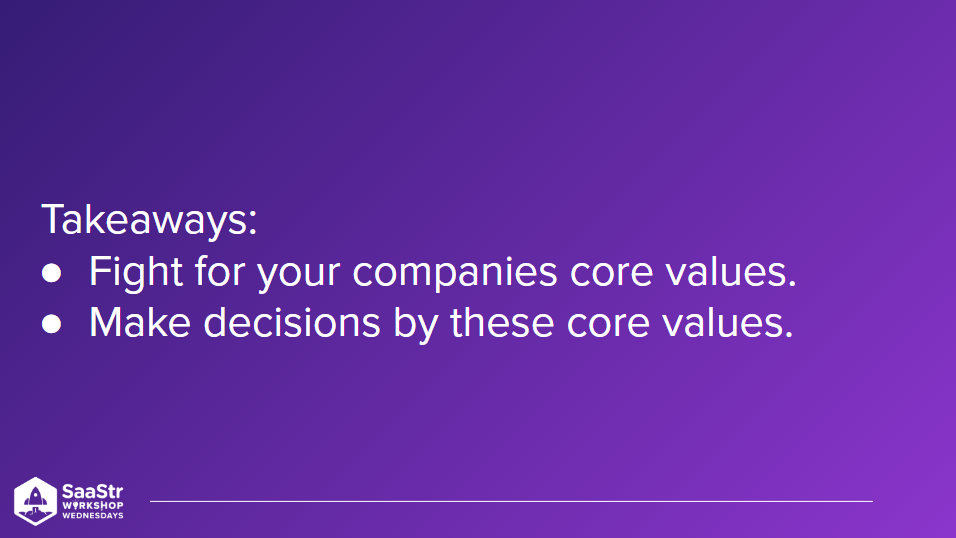
The Takeaways:
- Fight for your company’s core values. Clearly define what they mean, and hire and fire by them.
- Make strategic and product decisions by these core values. Startups have the competitive advantage of making big decisions quickly compared to slower-moving, larger companies.
Sometimes Executives Don’t Work Out
High-level team members have a much larger blast radius within the company, so choose wisely.
Young shares that if she hired just by stats alone, there was a 33% chance of it working out in year one.
At an executive level, people are really good at selling themselves. It’s their job. But execution is an entirely different thing.
When it comes to your executives, pay attention to these red flags.
- They use the pronoun “I” frequently. “I did this for my company,” or, “if it weren’t for me, we wouldn’t be here.” Real leaders will give all of the credit to their team.
- You dread having one-on-ones with them. Talking strategy and getting together is a crucial part of being a team, and if you dread it, listen to that.
- They blame all their peers. Things don’t go right at startups often. Leaders need to own up to it and focus on solving the problem, not blaming others.
- You catch wind that they’ve been complaining downwards or laterally. It needs to be like the military, where you only complain up. Anywhere else is just bad leadership.
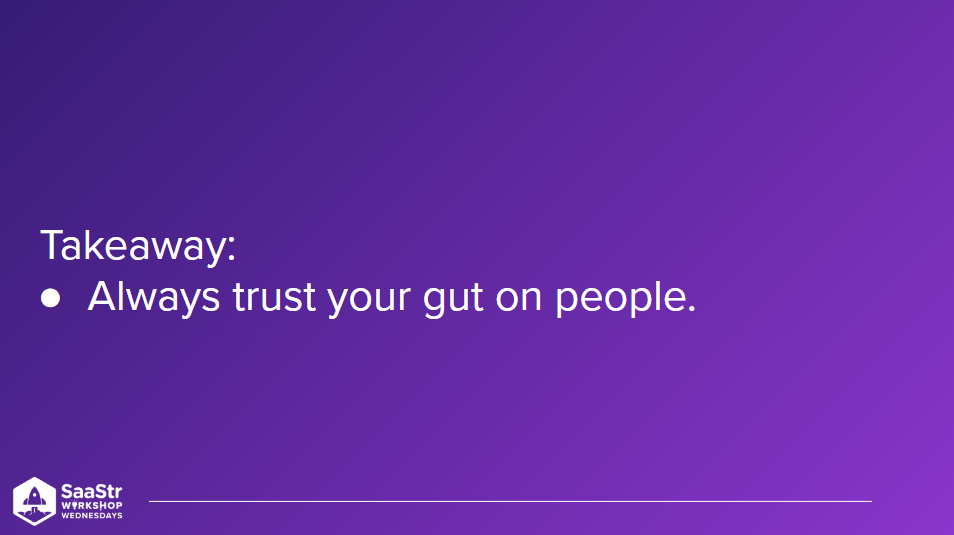
The Takeaway:
Always trust your gut about people. It’s highly intelligent, while minds will devise a million excuses why you can’t fire them. Just do it. It’s never as bad as you think it will be.
You Might Lose Product Market Fit
How does that happen? Everything was flying, and suddenly, everything changed. The reason? Everything changes. The world, your customers, and the market are constantly shifting.
At PlanGrid, they nailed it with product market fit. Then they hit $50M ARR and hit a wall. Their sweet spot was the carpenters, superintendents, and product engineers, not enterprises.
The corporate buyer couldn’t have cared less because the product wasn’t for them, but they were the buyers and decision-makers, and PlanGrid couldn’t get to them.
So it’s entirely possible to have product-market fit one year and then lose it the next.
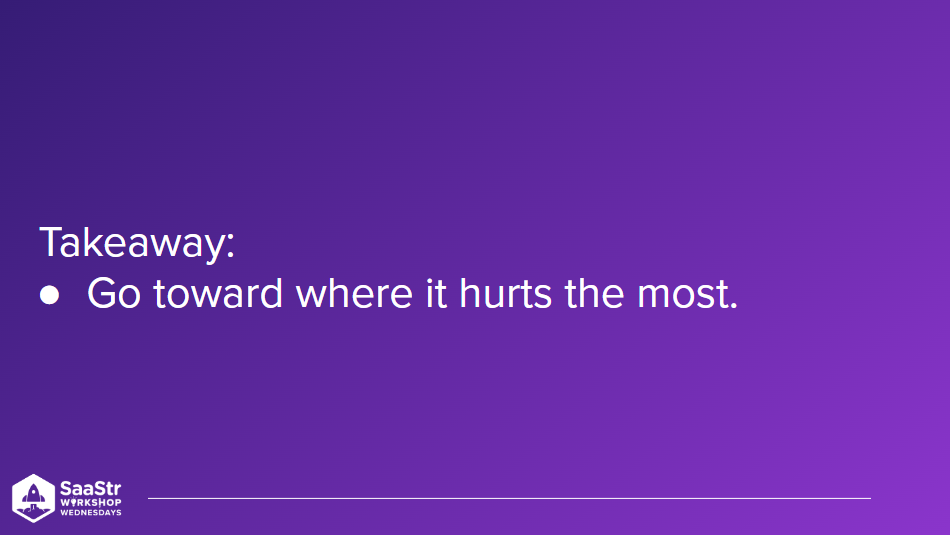
The Takeaway:
Go toward where it hurts the most. PlanGrid avoided building for enterprise because it was boring. It hurt the most to do, so they avoided it. Don’t do that.
Life Happens
Life is hard and happens to all of us. During the launch of PlanGrid, Young’s co-founder died of cancer at 29. As the company grew to 500 people, sad things happened constantly.
The work doesn’t stop just because you’re doing the most challenging thing you’ve ever done before, but it can impact your startup because it’s inevitable.
As a founder, you have to embrace this because hard things will happen in people’s personal lives that impact their professional lives.
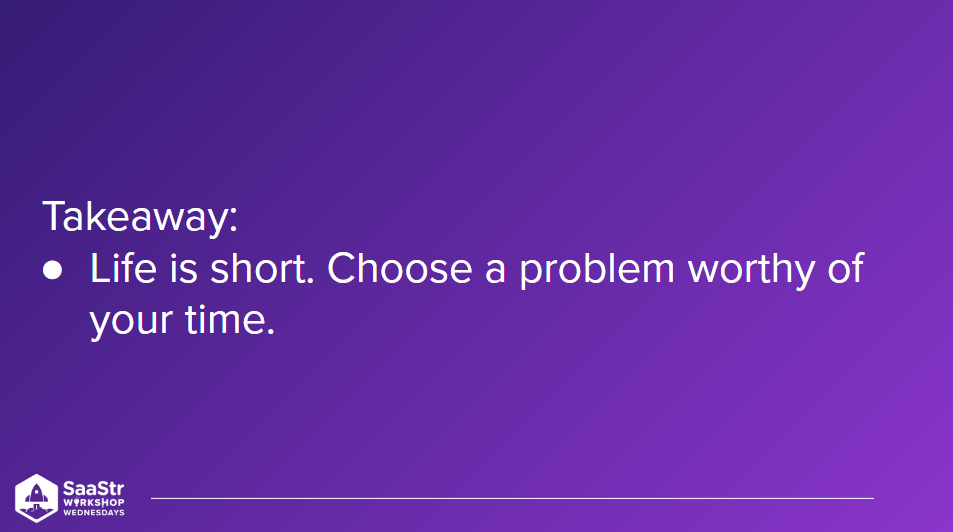
The Takeaway:
Life is short for all of us, even if you live to be 90. So choose a problem worthy of your time.
As a founder, especially young founders, surround yourself with people who know more than you. Don’t be afraid to look at the hard lessons and learn from them. Failure is inevitable, but you can’t have success without going through those trials along the way.

